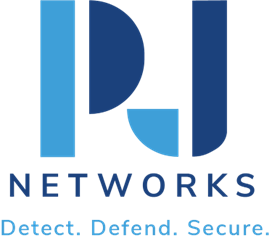Reducing Downtime with Proactive NOC Monitoring
In today’s fast-paced digital world, proactive NOC, downtime reduction, and network efficiency are more crucial than ever. You can’t afford long periods of downtime, can you? Imagine the costs piling up while systems are down. But there’s a solution: Proactive NOC monitoring. Let’s dig into how it works and why it’s essential for your business.
Understanding Proactive NOC Monitoring
Let’s break this down. What do we mean by proactive NOC monitoring? A Network Operations Center (NOC) is like the central nervous system of any IT infrastructure. It ensures everything is running smoothly. But why stop there? A proactive approach means we don’t just react to problems; we anticipate and prevent them. It’s like having a doctor who not only treats your symptoms but also helps you stay healthy in the first place.
- Anticipation over reaction: Identify potential issues before they escalate.
- Continuous monitoring: Around-the-clock watch on network performance.
- Automated alerts: Instant notification of anomalies.
Benefits of Real-Time Analysis
You may ask, Why real-time analysis? It’s simple. Real-time analysis lets us see what’s happening across the network as it happens. No more guessing games or delayed responses.
- Immediate detection: Spot problems the moment they arise.
- Swift resolution: Address issues before they affect the user experience.
- Data-driven decisions: Use accurate and up-to-date data for decision-making.
With real-time analysis, you gain insights that are crucial for maintaining a healthy network.
Implementation Strategies
Ready to implement proactive NOC monitoring? Let’s talk strategy. A solid plan is key. Here’s how we can get started:
- Assess current systems: Identify strengths and weaknesses in existing infrastructure. What are we dealing with right now?
- Set clear objectives: Define specific goals for downtime reduction and efficiency improvements.
- Invest in the right tools: Choose solutions that provide comprehensive monitoring and alerting capabilities.
- Train your team: Equip your staff with the knowledge to interpret data and respond to alerts.
Remember, the goal is to create a seamlessly integrated process that aligns with your company’s long-term vision.
Case Studies
Let me share a couple of real-world examples of how proactive NOC monitoring changed the game for some businesses.
Case Study 1: Tech Corp
Tech Corp was facing frequent downtime issues that impacted their revenue. By adopting proactive NOC monitoring:
- Reduced downtime: Downtime decreased by 30% within six months.
- Enhanced efficiency: Operational efficiency improved by utilizing real-time data.
- Cost savings: Reduced downtime equated to significant cost savings.
Case Study 2: HealthNet Solutions
HealthNet Solutions sought to enhance patient data security while maintaining network uptime. Proactive monitoring helped them achieve:
- Increased uptime: Achieved 99.9% network uptime.
- Better data protection: Identified and neutralized threats before breach attempts.
- Improved patient trust: Clients were reassured by the robust security protocols in place.
These examples illustrate how strategic monitoring can revolutionize your approach to network management.
Conclusion
Proactive NOC monitoring is not just a trend; it’s a necessity for any business that values downtime reduction and network efficiency. We’ve seen how anticipating problems and leveraging real-time data can transform operations and provide a competitive edge. Remember, the key is not just in the technology but how you use it to empower your team and enhance your operations. Are you ready to reduce downtime and pave the way for a more efficient future? The power of proactive NOC monitoring is just a step away.
Start implementing these strategies today, and you’ll see how impactful proactive NOC monitoring can be for your business. Let’s keep those systems humming smoothly.
